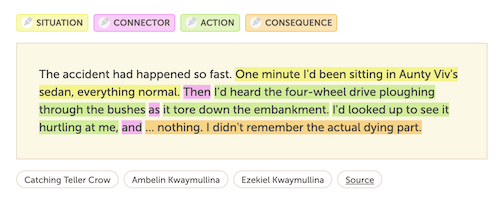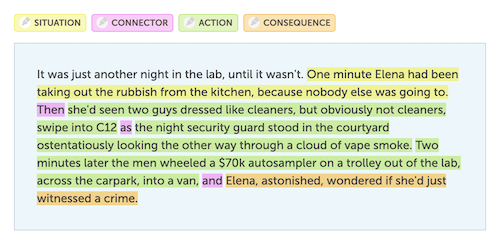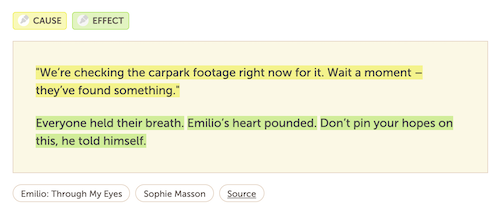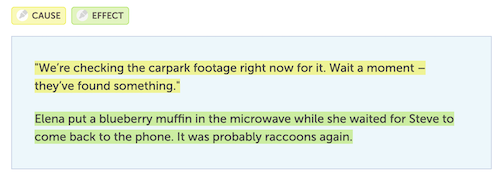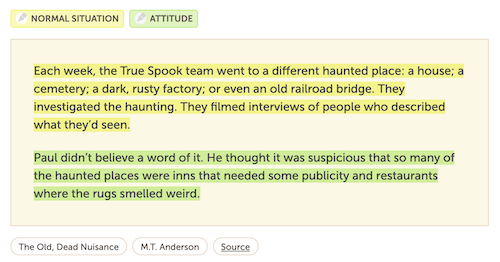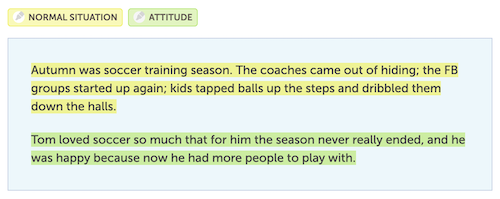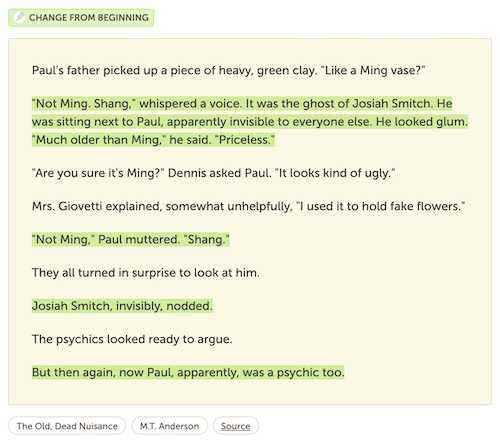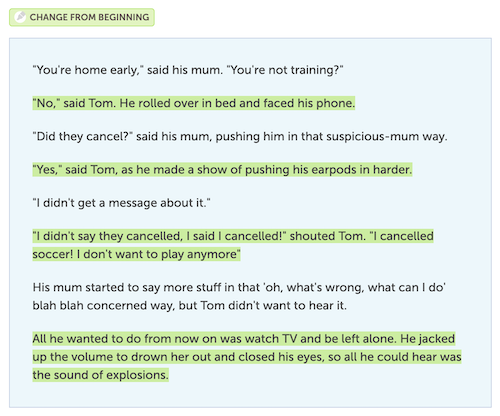New lesson on cause & effect in narrative
Apart from launching Frankenstories this week, we also published our latest lesson in the Narrative Skills series, on Change, cause & effect.
We said in an earlier article that contrast is like the thermodynamic gradient that drives everything in a story—well, change is the purpose of that movement.
The challenge with change in narrative is maintaining a credible chain of cause and effect that gives us a progression from A to B—as opposed a random series of events that go from A to 4 via 🤷🏻♀️.
And that's what this lesson is about!
The syntax of cause and effect
We begin the lesson with a nitty-gritty study of how grammatical connectors can establish cause and effect relationships between events:
We model examples to show how sequences of connectors create consistent relationships even when the content changes (for example, this then-as-and sequence):
We also point out that connectors such as 'because' and 'so' establish explicit cause and effect relationships, while words like 'as', 'then', and 'but' are more suggestive, which leads to our next point.
Inferring cause and effect
In narrative, we don't need grammatical cues to recognise cause and effect; readers can also infer it from adept juxtaposition and sequencing of events:
We edit some existing snippets to show how changing causes and/or effects creates completely different stories:
Change across a story
Finally, we pull back to look at how change is established across a story arc.
We sample moments from the beginning, middle, and end of an M.T. Anderson short story and provide similar examples:
We show how the beginning of the story establishes a clear baseline, then how the middle of the story acts as a series of causes that create a changed character in the end (the effect):
To conclude the lesson, students select their favourite 3 responses, which go as a set into Wrotevote or Peer Review.
It's a great lesson for helping students break the tyranny of 'then'!
You can preview the Change, cause & effect lesson here.
This concludes the "causality cluster" in Narrative Skills.
This is the last lesson in what we might call the "causality cluster", which includes:
All of these topics are aspects of the same theme: how events relate to each other in narrative.
Next up: the "subjectivity cluster"
Having dealt with causality, we're moving on to subjectivity, or how the world of the story is perceived and interpreted by the players within a narrative.
First up is everyone's favourite: point of view, which is a lot more than grammatical person!

